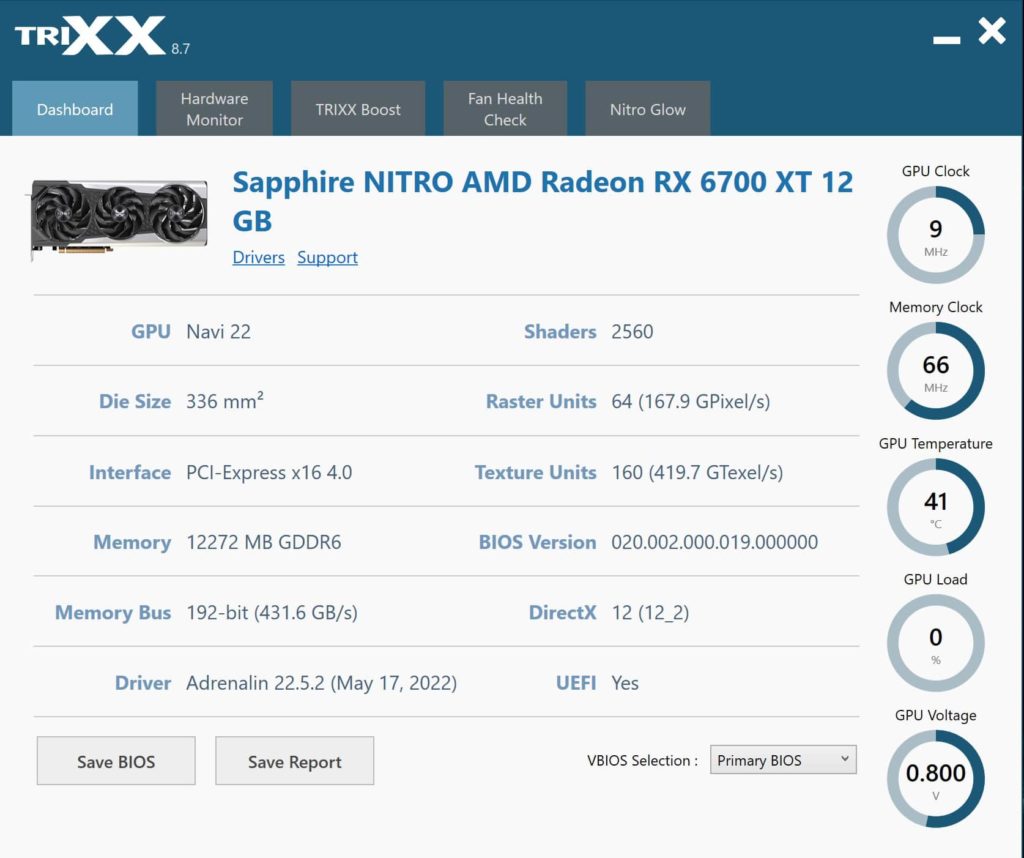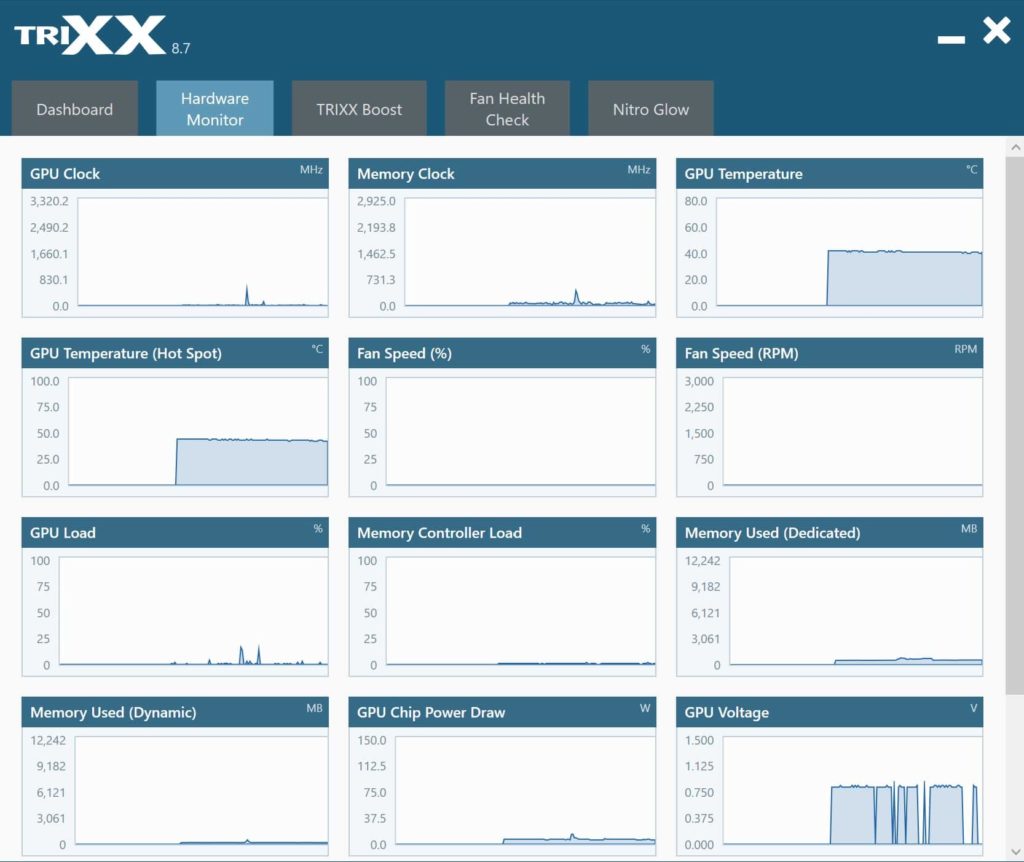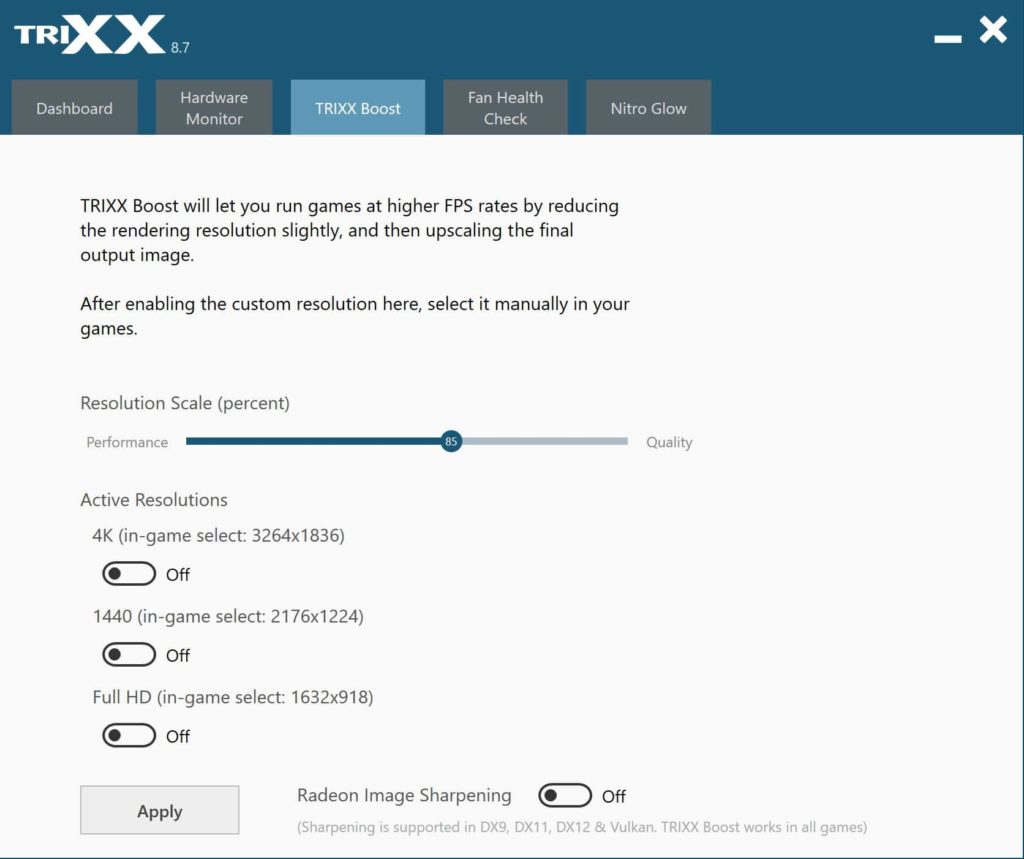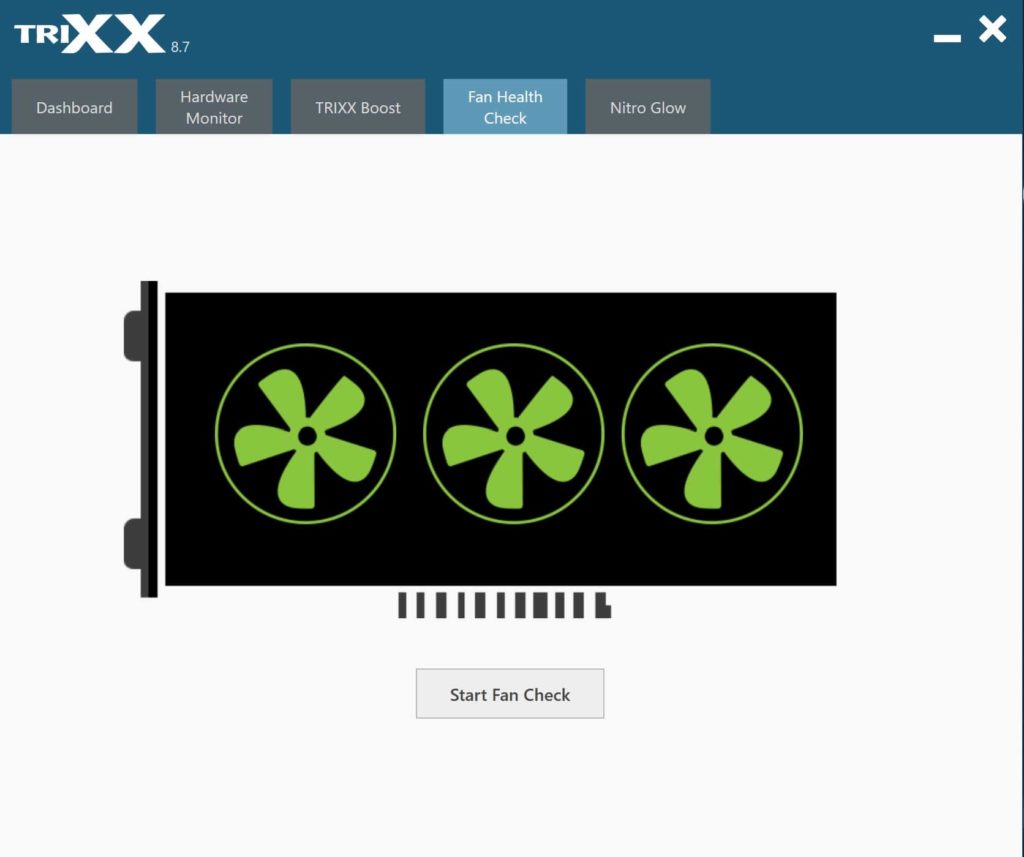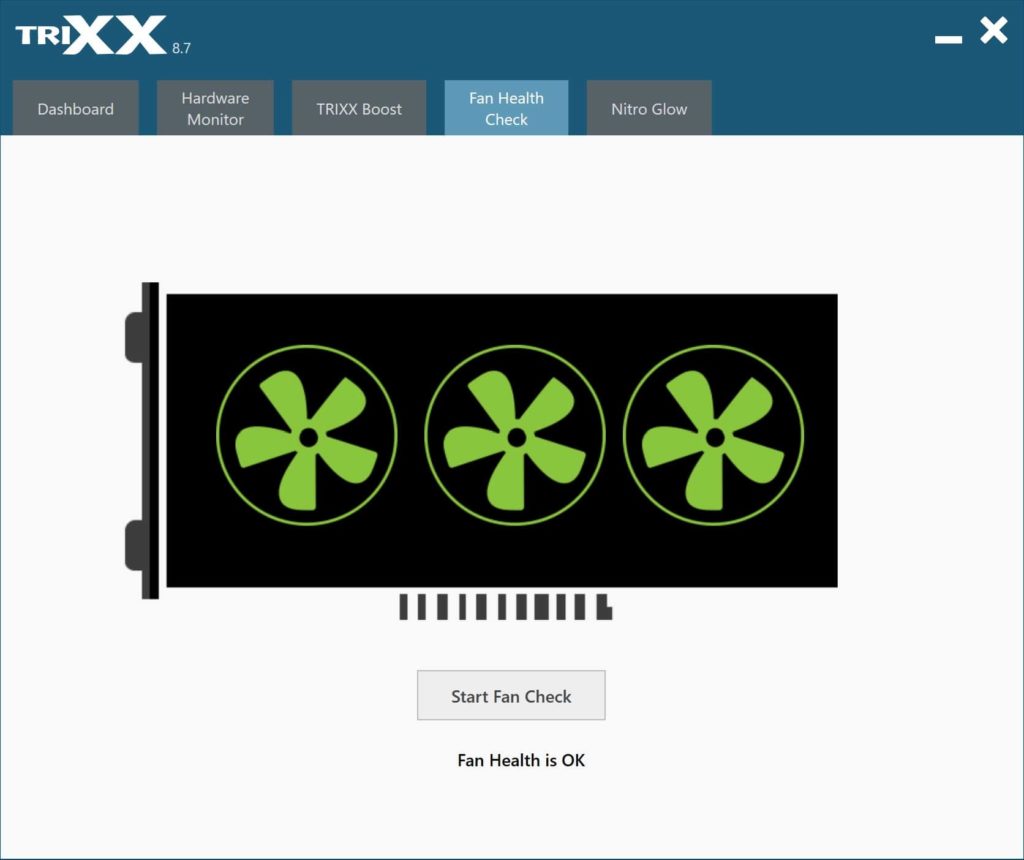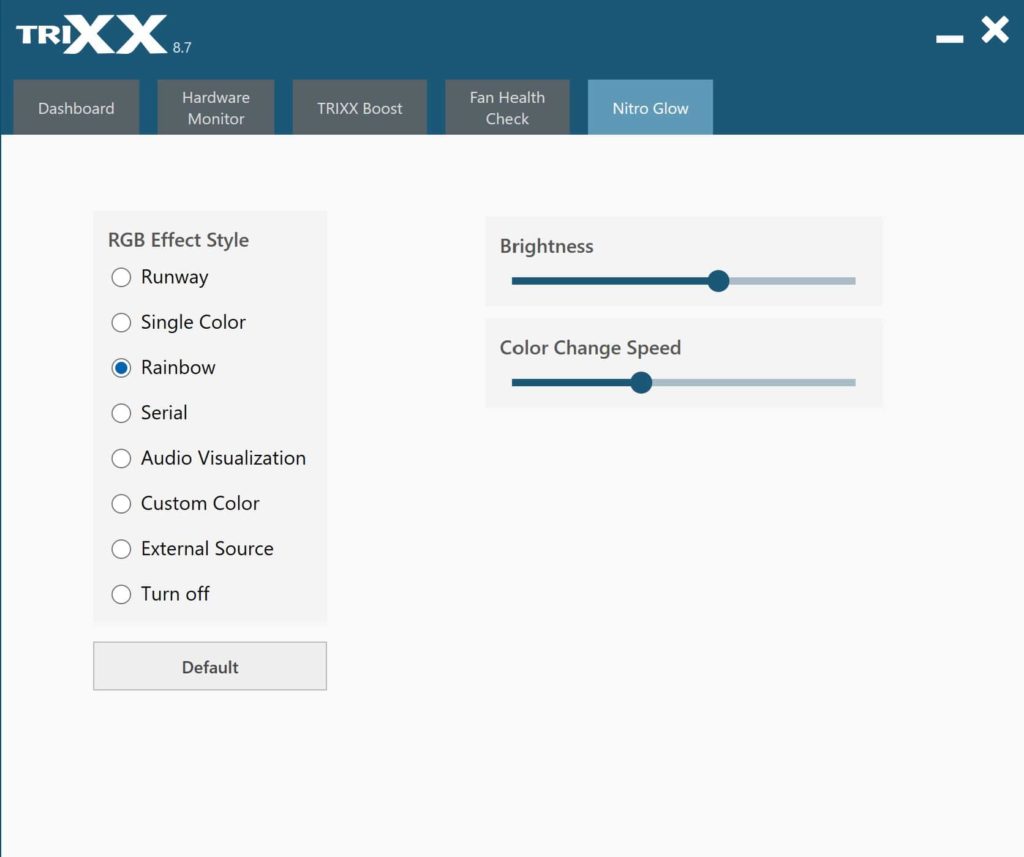Overclocking SAPPHIRE NITRO+ Radeon RX 6750 XT
Default
Before we find the highest stable overclock, we need to find out what the default GPU clock speed of the video card is. With both NVIDIA and AMD GPUs, the GPU frequency is dynamic. NVIDIA has GPU Boost, and AMD has its Game Clock and Boost Clock quoted frequencies. Typically, GPUs today can exceed the “Boost Clock” dynamically. We need to find out what it actually runs at, so we can compare the benefit of overclocking. To do this we will record the GPU clock frequency over time while playing a game. We use Cyberpunk 2077 for this with a very long manual run-through at “Ultra” settings recording GPU-Z sensor data.
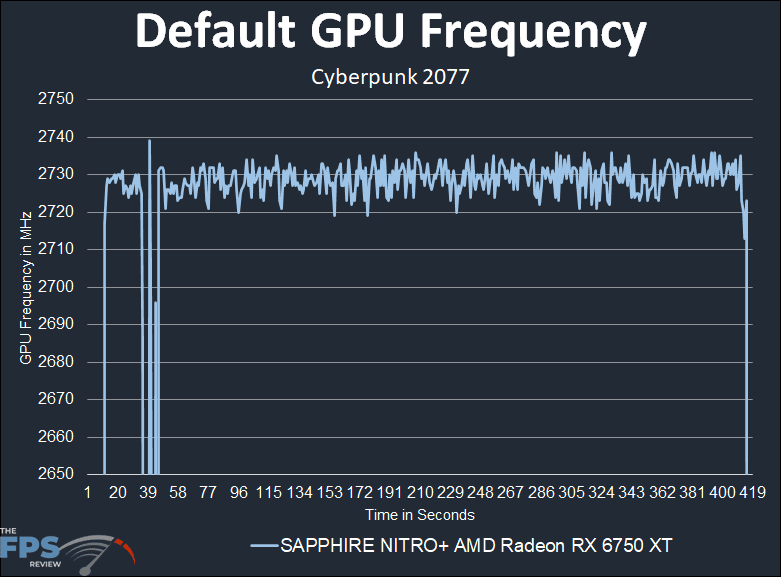
The Game Clock on this video card is set at 2554MHz and the Boost Clock is set at 2623MHz. As you can see from the GPU Frequency testing above, the actual clock speed while gaming is well over the Boost Clock. It’s hovering around 2720-2735MHz, averaging around 2730MHz. This is about 100MHz over the GPU Boost clock! That is quite impressive to see and suggests how well the newer NAVI 22 is performing here, the 6750 XT really does clock higher than the 6700 XT, especially with robust cooling such as SAPPHIRE has installed.
Overclocked
To overclock the SAPPHIRE NITRO+ AMD Radeon RX 6750 XT video card we are using the manufacturer-provided overclocking software which in this case is AMD Radeon Software. Though this video card supports SAPPHIRE TriXX software, that software does not provide overclocking ability, so we have to rely on AMD Radeon Software for overclocking. This is our highest stable overclock shown below.
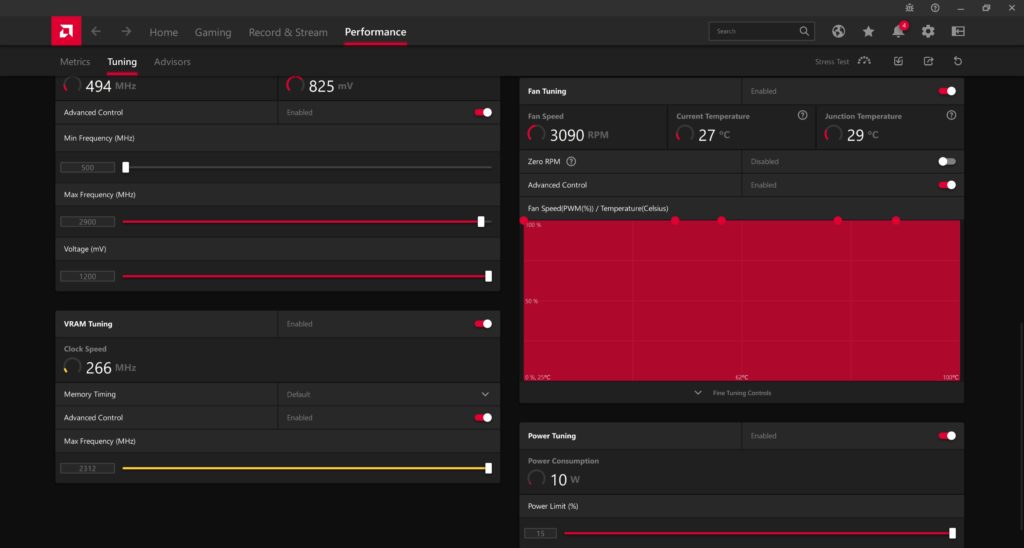
Above you can see our settings in the AMD Radeon Software Performance Tuning. We were able to increase the Power Limit up quite a bit, 15% over default, which was very nice headroom. In addition, we can set the fans to 100% to ensure the highest overclock. We could not adjust Voltage however, that was locked.
We were also limited on Memory Overclocking. The Memory Frequency slider maxed out at 2312MHz which results in a memory overclock of just 18.5GHz versus the default of 18GHz. Therefore, we don’t have much headroom to overclock the memory. We think it could overclock much higher, but we just don’t have the ability to even try, so 18.5GHz is our maximum memory overclock. This brings the memory bandwidth up to 444GB/s versus 432GB/s at default, so not a whole lot there.
The biggest gain in overclocking came from overclocking the GPU frequency. In our testing, we were able to set the Max Frequency slider up to 2900MHz. To see what that results in while gaming, let’s look at the graph below.
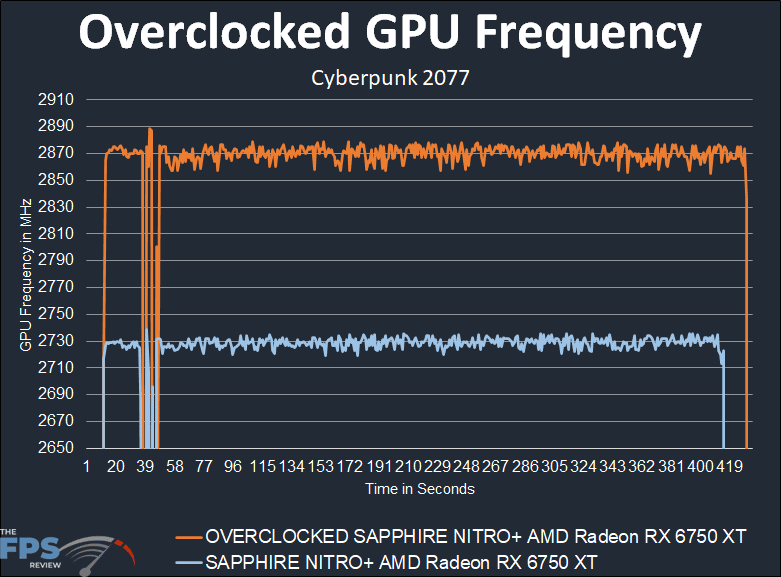
At default (the blue line), you can see we were at around 2730MHz. Now, with overclocking, putting the slider at 2900MHz, the average frequency was around 2870MHz. That is, on average, a 140MHz overclock, or 5%. It doesn’t sound like a lot, but consider how much faster this is compared to the AMD reference spec of 2600MHz or even the lower spec of the Radeon RX 6700 XT. At over 2800MHz, this GPU is screaming. Combine that with the memory overclock, and we do have faster performance in games.
SAPPHIRE TriXX
Here are the screenshots of the functions that TriXX allows, which does have monitoring built-in. Unfortunately, it does not have any overclocking ability on the NITRO+ series. Note, in the first screenshot TriXX is incorrectly reporting the card as a 6700 XT, appears the software needs an update, our card is indeed the 6750 XT.
